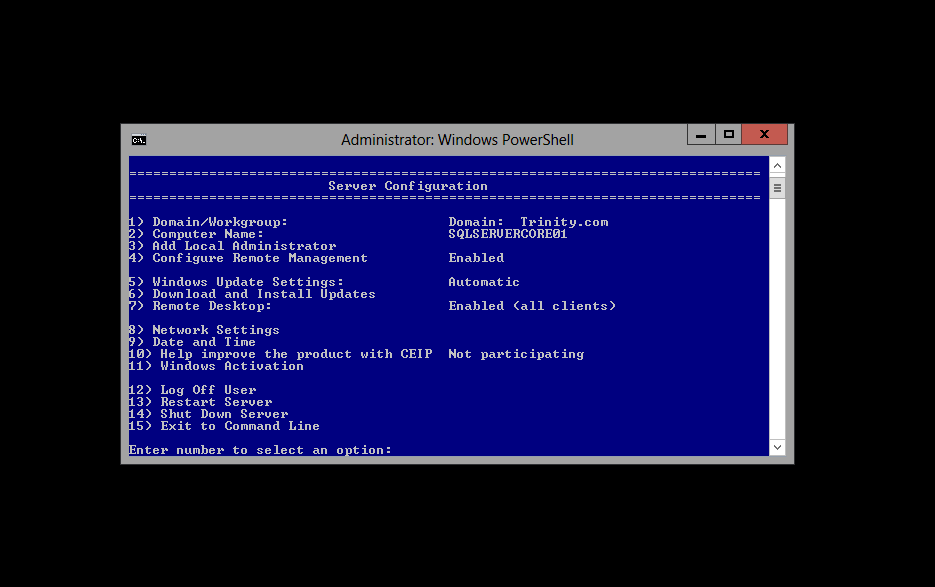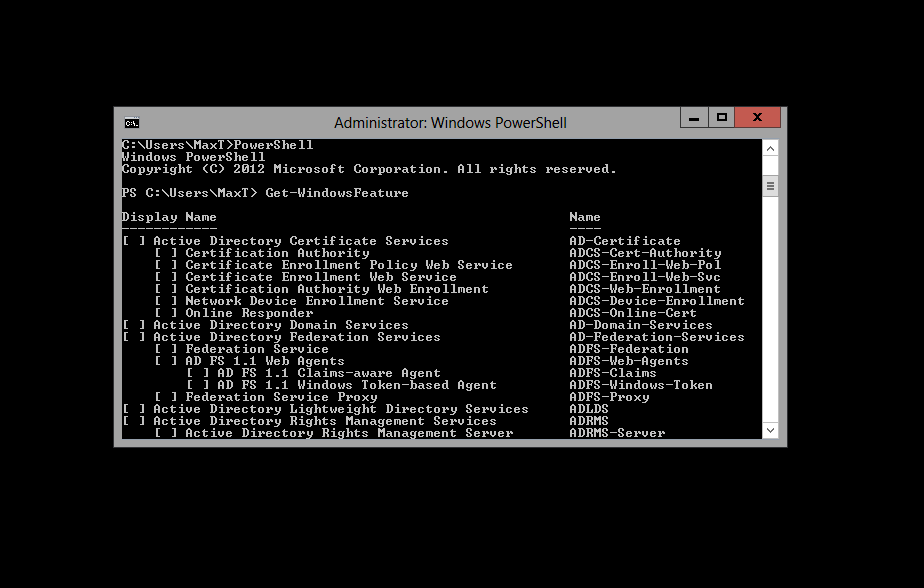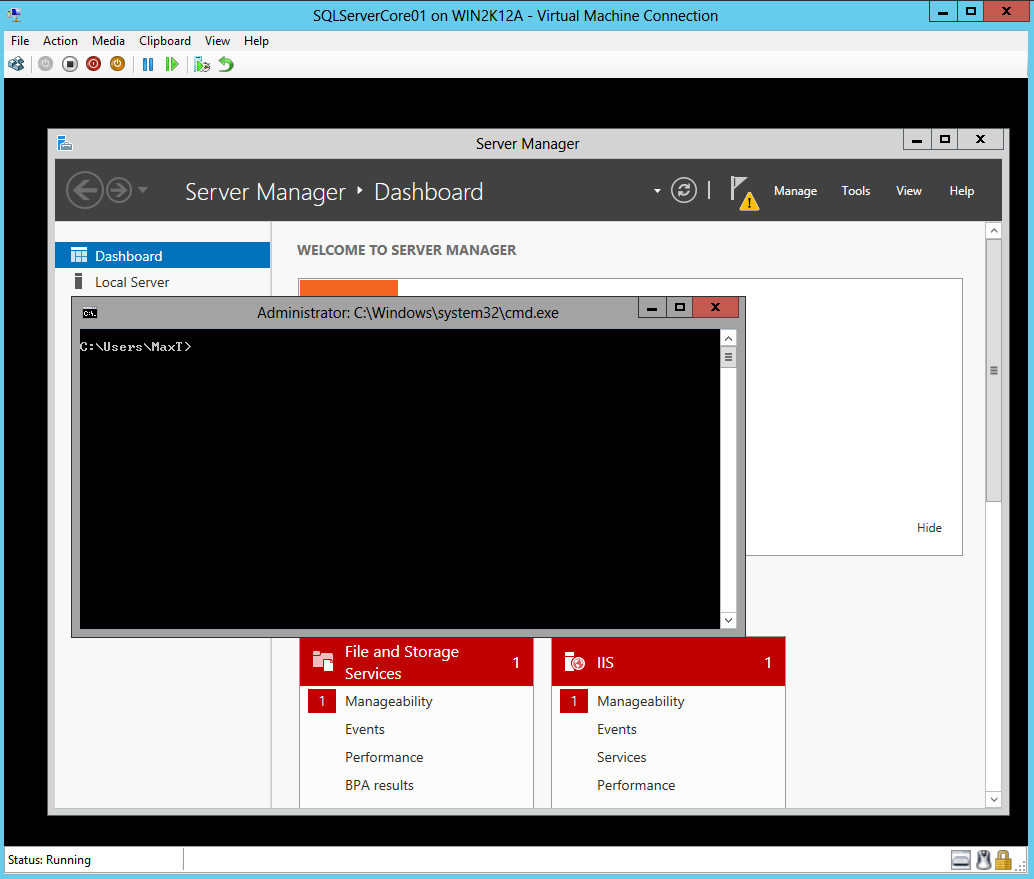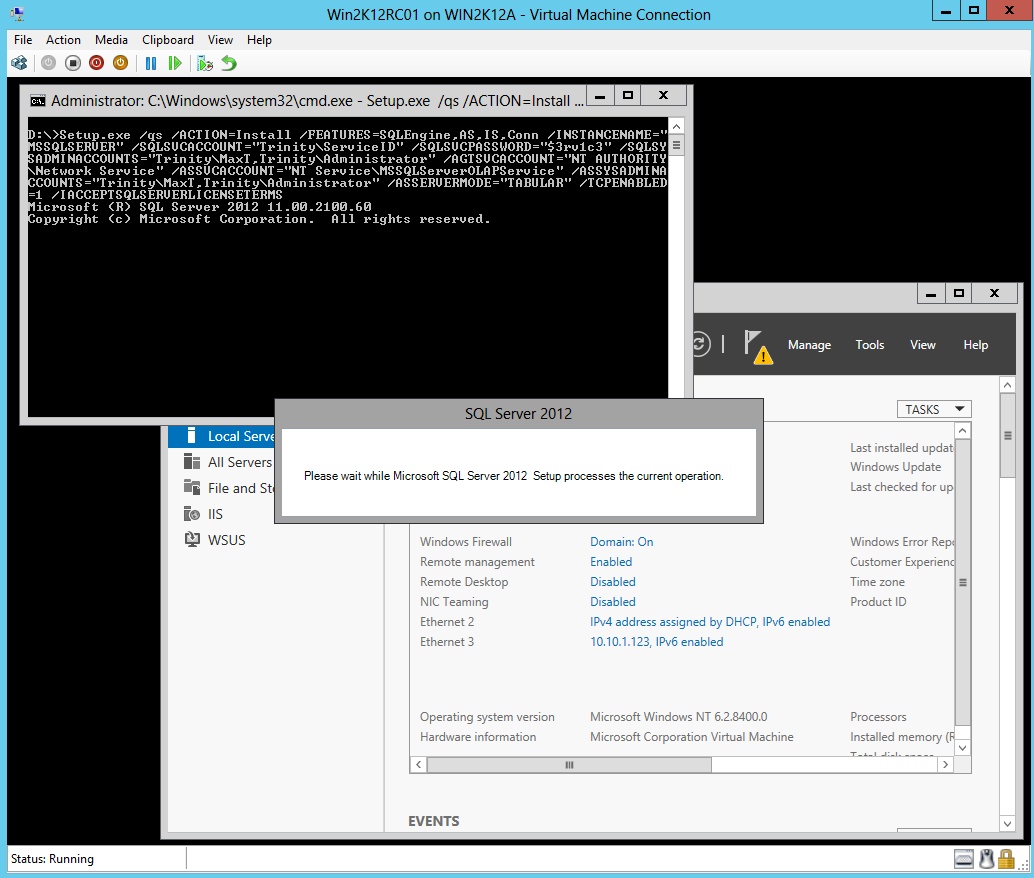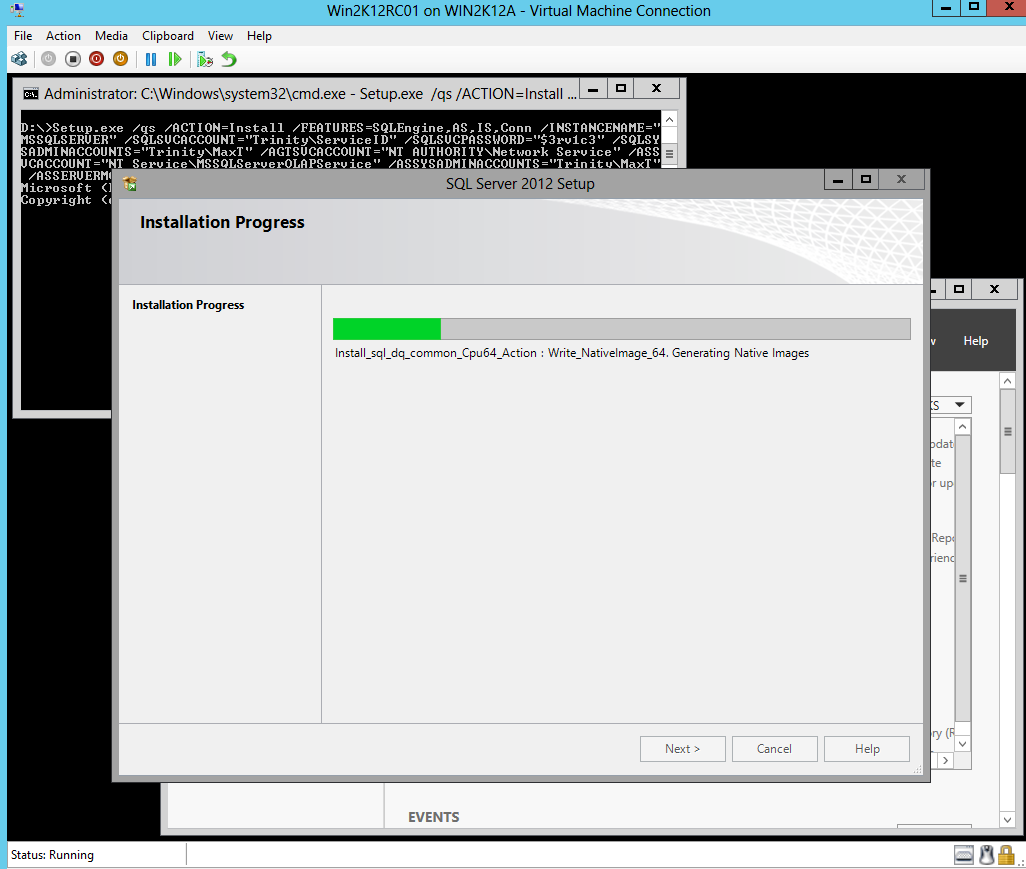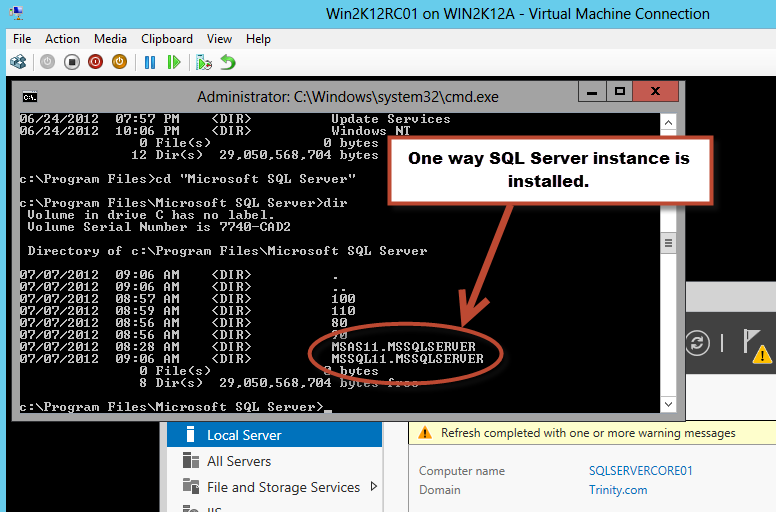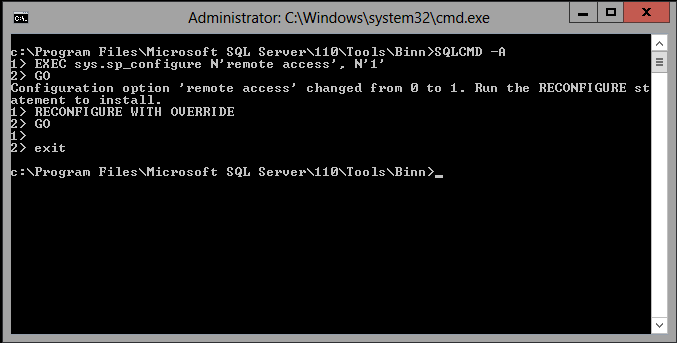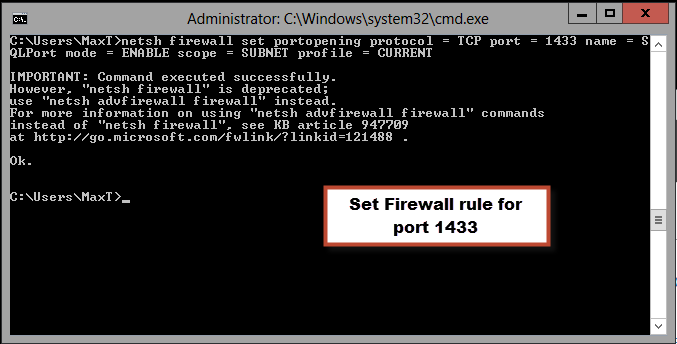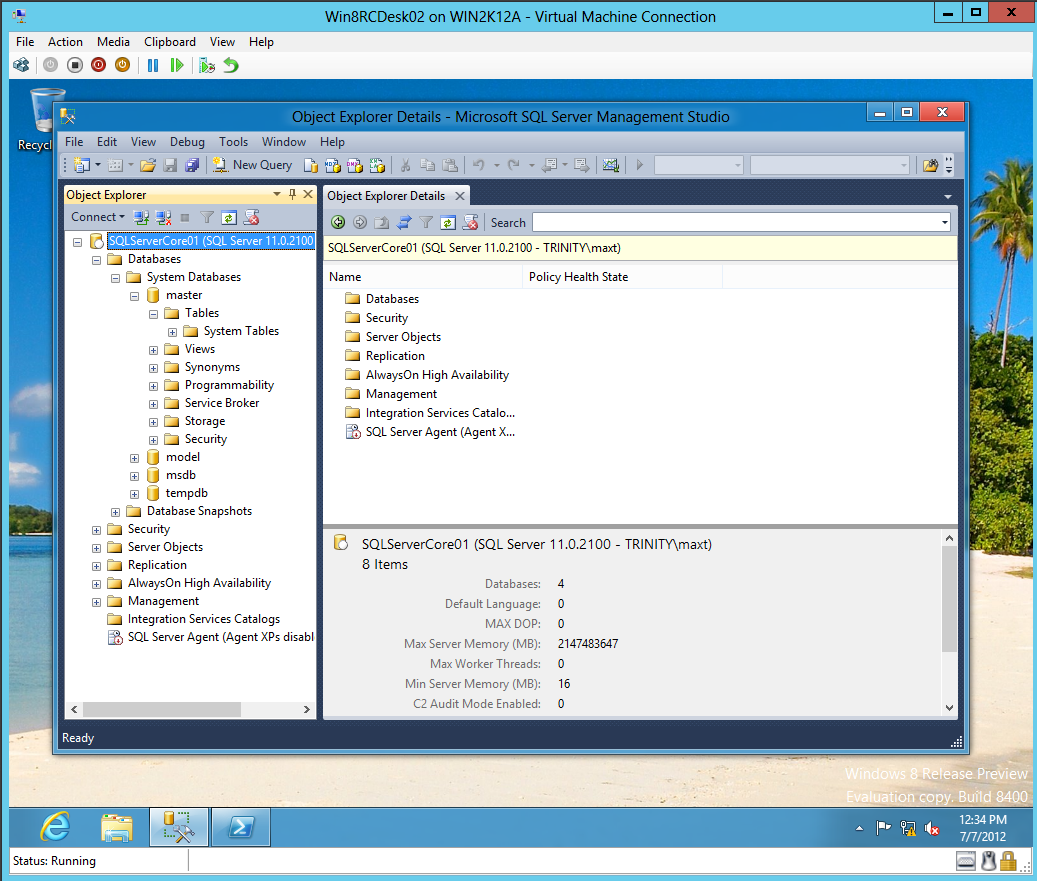The $Error variable hold a collection of information, and that’s why using $Error[0] can get to your error message objects. Also the $Error[0] variable will hold the last error message encountered until the PowerShell session ends.
Sample Console session:
Windows PowerShell
Copyright (C) 2009 Microsoft Corporation. All rights reserved.
PS C:\Users\maxt> $error
PS C:\Users\maxt>
PS C:\Users\maxt> Ip[config
Ip[config : The term ‘Ip[config’ is not recognized as the name of a cmdlet, function, script file, or operable program.
Check the spelling of the name, or if a path was included, verify that the path is correct and try again.
At line:1 char:10
+ Ip[config <<<<
+ CategoryInfo : ObjectNotFound: (Ip[config:String) [], CommandNotFoundException
+ FullyQualifiedErrorId : CommandNotFoundException
PS C:\Users\maxt>
PS C:\Users\maxt> $error[0]
Ip[config : The term ‘Ip[config’ is not recognized as the name of a cmdlet, function, script file, or operable program.
Check the spelling of the name, or if a path was included, verify that the path is correct and try again.
At line:1 char:10
+ Ip[config <<<<
+ CategoryInfo : ObjectNotFound: (Ip[config:String) [], CommandNotFoundException
+ FullyQualifiedErrorId : CommandNotFoundException
PS C:\Users\maxt>
PS C:\Users\maxt> $Error[0].InvocationInfo.line
Ip[config
PS C:\Users\maxt>
Starting a new PowerShell session the $Error will be empty. Type a bad command “Ip[onfig” and the $Error variable will get populated. Then we use the $Error[0] to display and access the rest of the information it holds.
Don’t forget to use the Get-Member to expose your PS variable objects.
PS C:\Users\maxt> $Error | Get-Member
TypeName: System.Management.Automation.ErrorRecord
Name MemberType Definition
—- ———- ———-
Equals Method bool Equals(System.Object obj)
GetHashCode Method int GetHashCode()
GetObjectData Method System.Void GetObjectData(System.Runtime.Serialization.Serializatio
GetType Method type GetType()
ToString Method string ToString()
CategoryInfo Property System.Management.Automation.ErrorCategoryInfo CategoryInfo {get;}
ErrorDetails Property System.Management.Automation.ErrorDetails ErrorDetails {get;set;}
Exception Property System.Exception Exception {get;}
FullyQualifiedErrorId Property System.String FullyQualifiedErrorId {get;}
InvocationInfo Property System.Management.Automation.InvocationInfo InvocationInfo {get;}
PipelineIterationInfo Property System.Collections.ObjectModel.ReadOnlyCollection`1[[System.Int32,
TargetObject Property System.Object TargetObject {get;}
PSMessageDetails ScriptProperty System.Object PSMessageDetails {get=& { Set-StrictMode -Version 1;
PS C:\Users\maxt> $Error.InvocationInfo
PS C:\Users\maxt> $Error[0].InvocationInfo
MyCommand :
BoundParameters : {}
UnboundArguments : {}
ScriptLineNumber : 1
OffsetInLine : 9
HistoryId : -1
ScriptName :
Line : ip[onfig
PositionMessage :
At line:1 char:9
+ ip[onfig <<<<
InvocationName : ip[onfig
PipelineLength : 0
PipelinePosition : 0
ExpectingInput : False
CommandOrigin : Internal
Finally, we can get deeper in the $Error[0] object to extract the line that failed during execution. If you need to display the failed command line you can use the following line:
$Error[0].InvocationInfo.line
PS C:\Users\maxt> $Error[0].InvocationInfo.line
ip[onfig
PS C:\Users\maxt>
It’s all about understanding your .NET objects. Hope this help!
🙂
